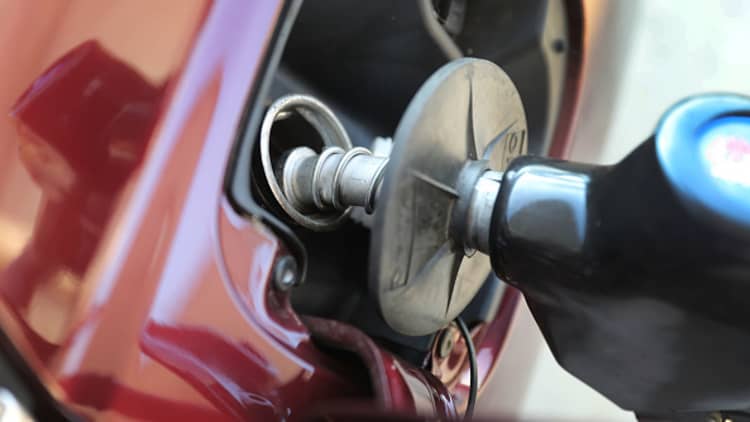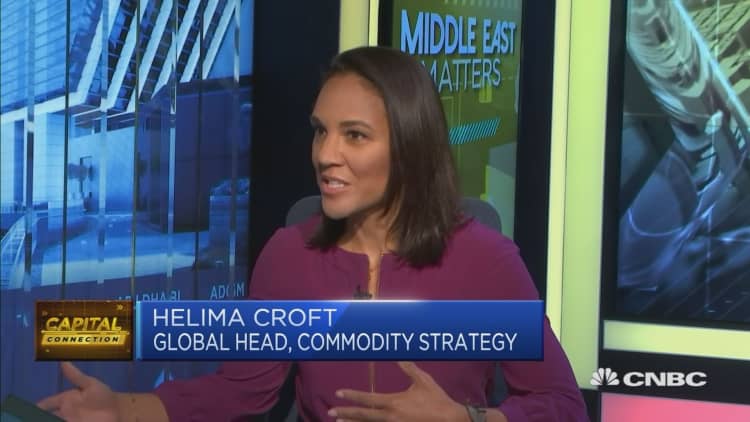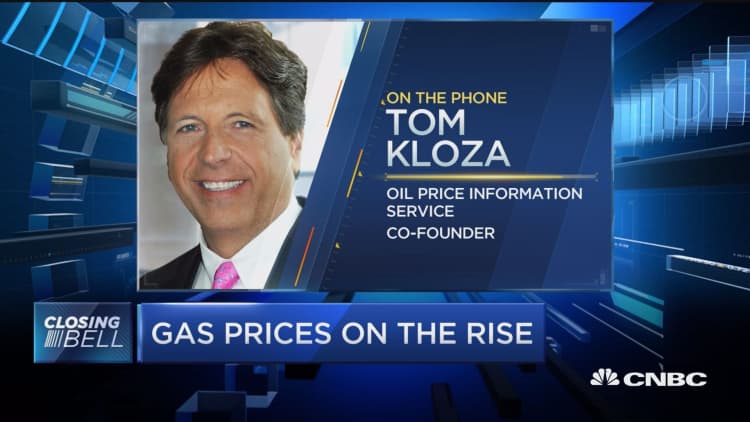
Record-setting demand for gasoline, robust U.S. fuel exports and rising oil prices could be conspiring to create pain at the pump for American drivers this summer, according to John Kilduff, founding partner at energy hedge fund Again Capital.
U.S. gasoline prices historically rise as Memorial Day — the unofficial kickoff to the summer driving season — approaches. Once the holiday passes, the cost of gas tends to decline as the market realizes there's adequate stockpiles of fuel in storage tanks, said Kilduff.
But this year could be different, in his view. That's because drivers are consuming a record level of gasoline at a time when U.S. gas exports have hit all-time highs above 2 million barrels a day.
"It is something to watch. We could be on the cusp of a hot, high-priced gasoline summer," he told CNBC's "Squawk Box" on Tuesday.
Kilduff is not alone in his forecast. About half of U.S. states could pay $3 or more for a gallon of regular gasoline, according to Tom Kloza, global head of energy analysis at Oil Price Information Service. The current national average is $2.879 a gallon, up from $2.338 at this time last year, according to AAA.
Right now, Kilduff sees about 10-15 cents of the summer premium in the cost of gas. Meanwhile, crude oil prices have recently hit 3 ½-year highs. Crude, the feedstock for refined fuels, accounts for about half the cost of making a gallon of gasoline.
Oil prices have been recovering throughout the last year as OPEC, Russia and other producers limit their output to whittle away at oversupply. The cost of crude has run up more than expected due to falling output in Venezuela and concerns about turmoil in the Middle East.

The Trump administration withdrew from the Iran nuclear deal last week and is restoring sanctions on crude exports from Iran, OPEC's third-largest oil producer. At the same time, Iran and Israel have traded rocket fire along the Syrian border, and a political coalition led by a cleric hostile to both Washington and Tehran topped the polls in Iraqi elections this week.
While U.S. crude output is surging, bottlenecks are forming in the fast-growing oil-producing region of western Texas. That means OPEC will likely remain in control of the oil price for now, and Kilduff does not think the Saudi-led group is in any hurry to start pumping in order to tamp down prices.
Earlier on Tuesday, Helima Croft, global head of commodity strategy at RBC Capital Markets, also said it's not certain Saudi Arabia and Russia will step in to make up for the loss of Iranian crude due to U.S. sanctions.
In Kilduff's view, OPEC is comfortable allowing U.S. crude prices — currently at about $71 a barrel — to settle around $80 to $85 a barrel and possibly spike as high as $100 a barrel.
"I don't think they want it much more than $100, but they're willing to allow us to suffer, I think, $100 for a brief period of time," he said.
"I think that's an outside sort of number, but certainly $85 to $95 is well within the realm of possibility, particularly if things get worse in the Middle East."
Kilduff does see one release valve for oil prices: President Donald Trump could intervene directly with the Saudis, with whom he's built a close relationship. Last month, Trump complained on Twitter that oil prices are artificially high, saying OPEC was to blame.
WATCH: Average family to pay $200 more for gas

Correction: The U.S. average for a gallon of regular gasoline was $2.338 at this time last year, according to AAA. An earlier version misstated the price. Helima Croft of RBC Capital Markets said Tuesday it's not certain Saudi Arabia and Russia will step in to make up for the loss of Iranian crude. An earlier version misstated the day.


